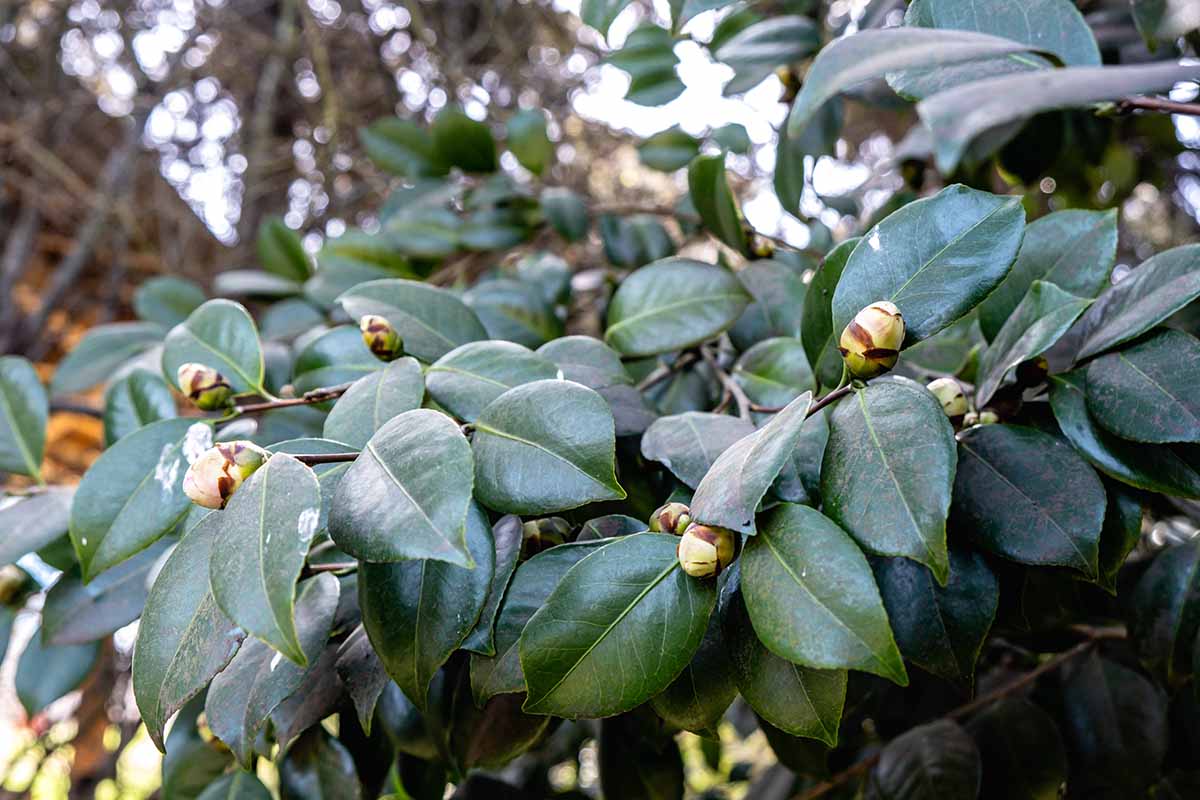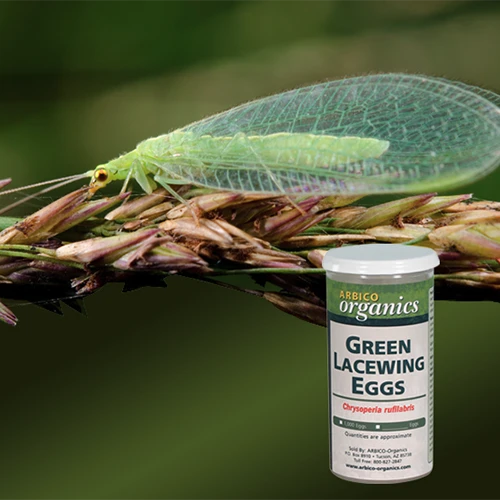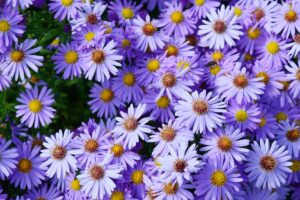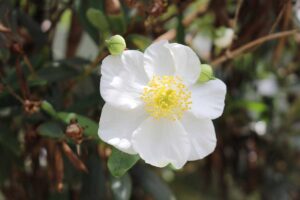Gardeners grow many different types of plants often for the sole purpose of enjoying their pretty flowers.
I think that’s especially true of camellias because they provide some much-needed color and visual interest when most other bloomers are napping.
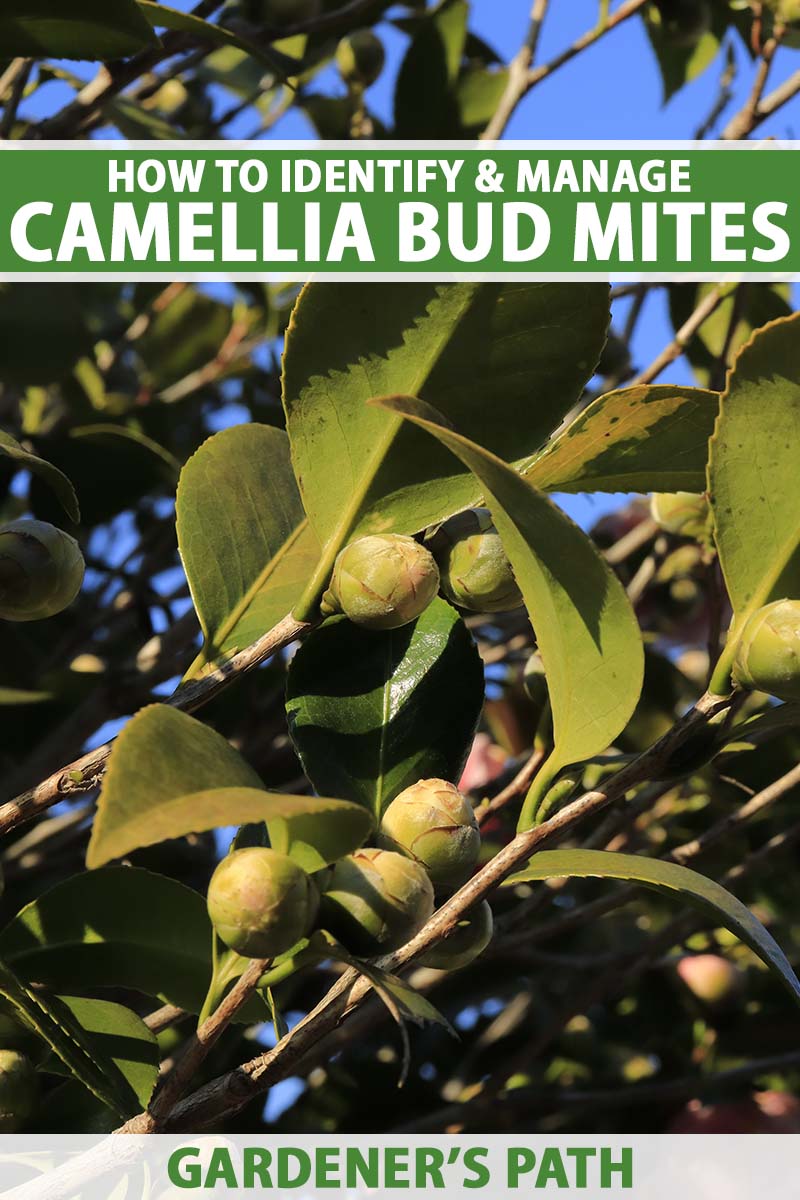
We link to vendors to help you find relevant products. If you buy from one of our links, we may earn a commission.
That’s why it’s so incredibly frustrating when something happens to cause the flowers not to form. I can forgive a hosta that doesn’t bloom, but a winter without camellia flowers?! Nope. Not doing it.
One of the things that can cause a lack of blossoms is an infestation of bud mites.
These pests are microscopic but the damage they do is anything but. They cause browning, falling buds, and a lack of flowers. They suck!
And I mean that literally. They use their teeny-tiny mouthparts to suck the juices from plants, leaving damage in their wake.
Don’t let these pests destroy your winter color! This guide aims to help with just that. Here’s what we’ll go over, coming right up:
What You’ll Learn
Don’t bother with the microscope. You’re going to want to arm yourself with this guide, a rake, and, your trusty pruners. Ready? Let’s go!
What Are Bud Mites?
These pests are eriophyoid mites (part of the superfamily Eriophyoidea) that attack the buds of camellia plants.
When it comes to camellias, Cosetacus camelliae is the particular species that causes problems.
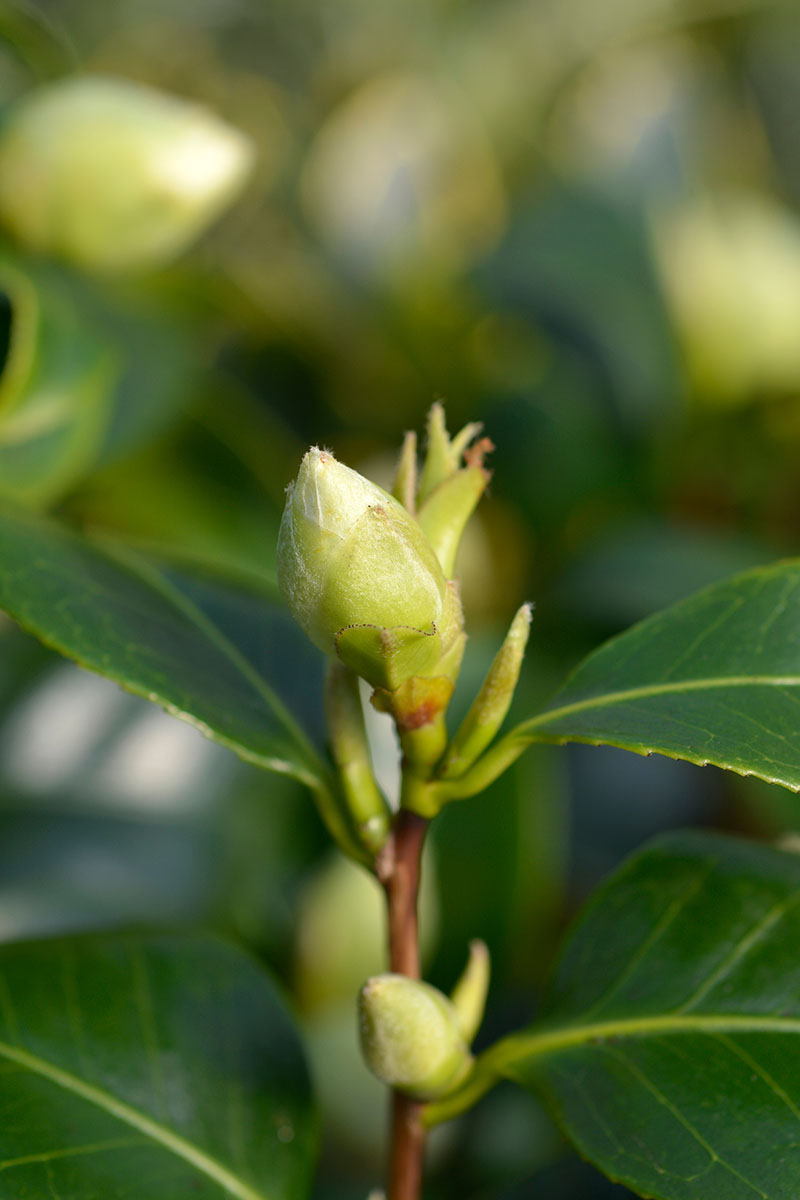
These spider relatives are impossible to see with the naked eye, so don’t bother searching for them.
Despite their itty-bitty size, they can get around. These mites move on the wind by spinning little webs that they can use as a sort of kite, or they can hitchhike on birds, mammals, insects, or gardening tools.
Bud mite infestations are pretty rare. If you’re experiencing bull-nosing in your garden, a term we’ll go over shortly, it could be caused by these pests – or it may be the result of something else.
Bull-Nosing
Bullnosing, bull nosing, bull-nosing, bullheading, or balling are all terms for the same problem.
Whatever you call it, it’s when the buds form on a camellia plant, but they don’t fully open into flowers. The buds might drop off of the plant or they might stay attached but never open.
These pests can cause this, but so can warm fall temperatures, too many buds produced on a single plant, or too much shade.
Some camellia cultivars and hybrids are more prone to bullnosing, such as ‘Elegans.’
Symptoms
Bud mites infest both terminal and flower buds.
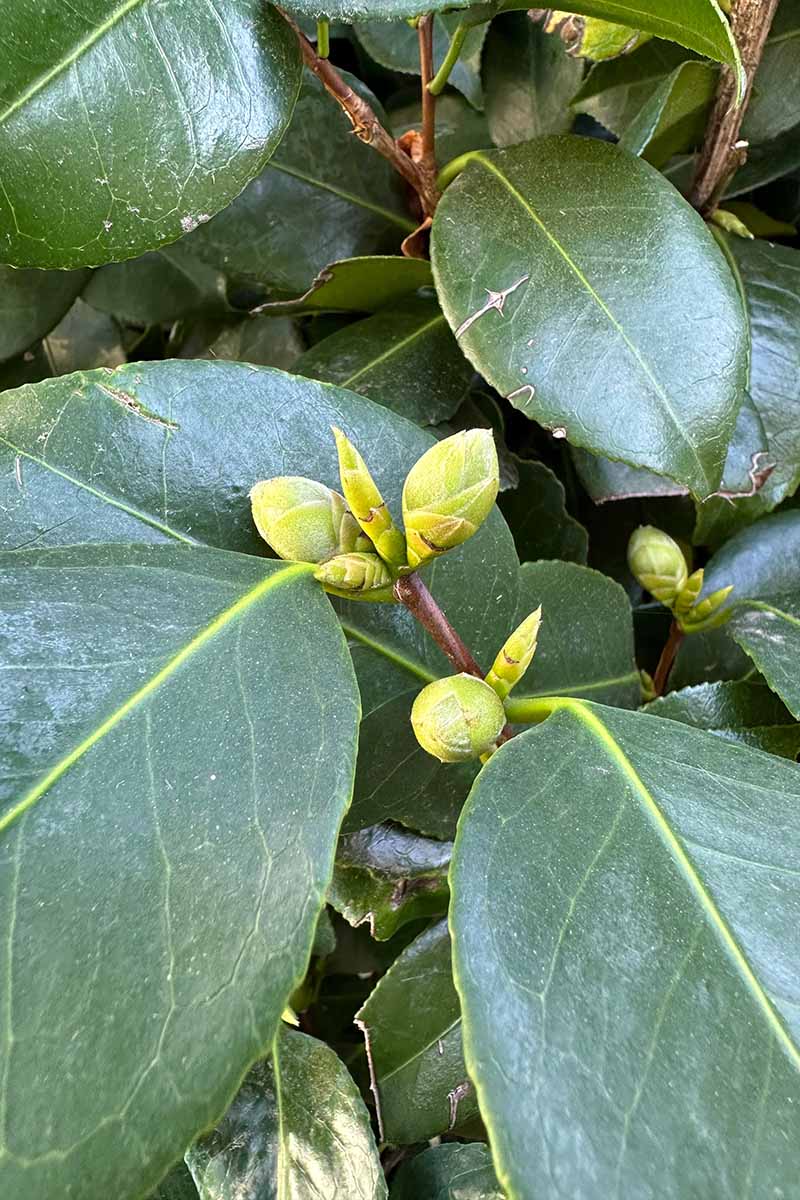
Infested buds turn brown, with the edges of the scales turning brown first before progressing to the rest of the bud. They may also dry out and they might fall off the plant, but not necessarily.
Have you spotted new growth turning brown?
Some cultivars, such as ‘Ruffian’ and ‘Marie Bracey,’ are prone to scale browning even without pest problems, so it can be a little difficult to make a definite diagnosis based on this symptom alone.
Bud mite damage usually appears first on the outer terminal buds.
If only the flower buds are affected or if the inner growth is showing symptoms first, it might be worth considering other causes before you accuse C. camelliae of wreaking havoc in your garden.
These pests can also cause the buds to form more slowly than usual, and to open later than normal.
Control
First and foremost, remove any symptomatic growth and place it in a bag to dispose of it. The larvae and adults live in the buds, so removing them removes the mites.
Adult females overwinter in the soil, so it helps to clean up any mulch or fallen leaves and dispose of them, as well. Turn the surface of the soil to expose the pests to the elements.
You can also employ beneficial nematodes to kill the soil-dwelling adults. Use a product that contains several species for the most effective treatment.
Triple Threat Beneficial Nematodes
Something like Triple Threat Beneficial Nematodes – Sf, Sc, Hb from Arbico Organics is perfect.
You can choose five, 10, 50, 250, or 500 million quantities depending on how large of an area you need to treat.
Mites, whether of the bud variety or otherwise, tend to thrive in dry conditions. They’re also easily knocked loose from their host plants.
Kill two birds with one stone by spraying your plants with a blast of water from the hose. This will raise the humidity and knock them away.
Finally, you can opt to spray your plants with horticultural oil to smother the mites.
Don’t use a miticide as it is difficult to eradicate these pests with chemicals and they will develop resistance over time.
Spray once every three weeks starting when the flowers fall from the tree and ending in early fall.
Bonide All Seasons Horticultural Spray
You can find horticultural oil at pretty much any nursery or garden center. I prefer Bonide’s All Seasons product, which you can pick up at Arbico Organics.
Prevention
Unfortunately, there isn’t a lot you can do to prevent mites from paying your plants a visit.
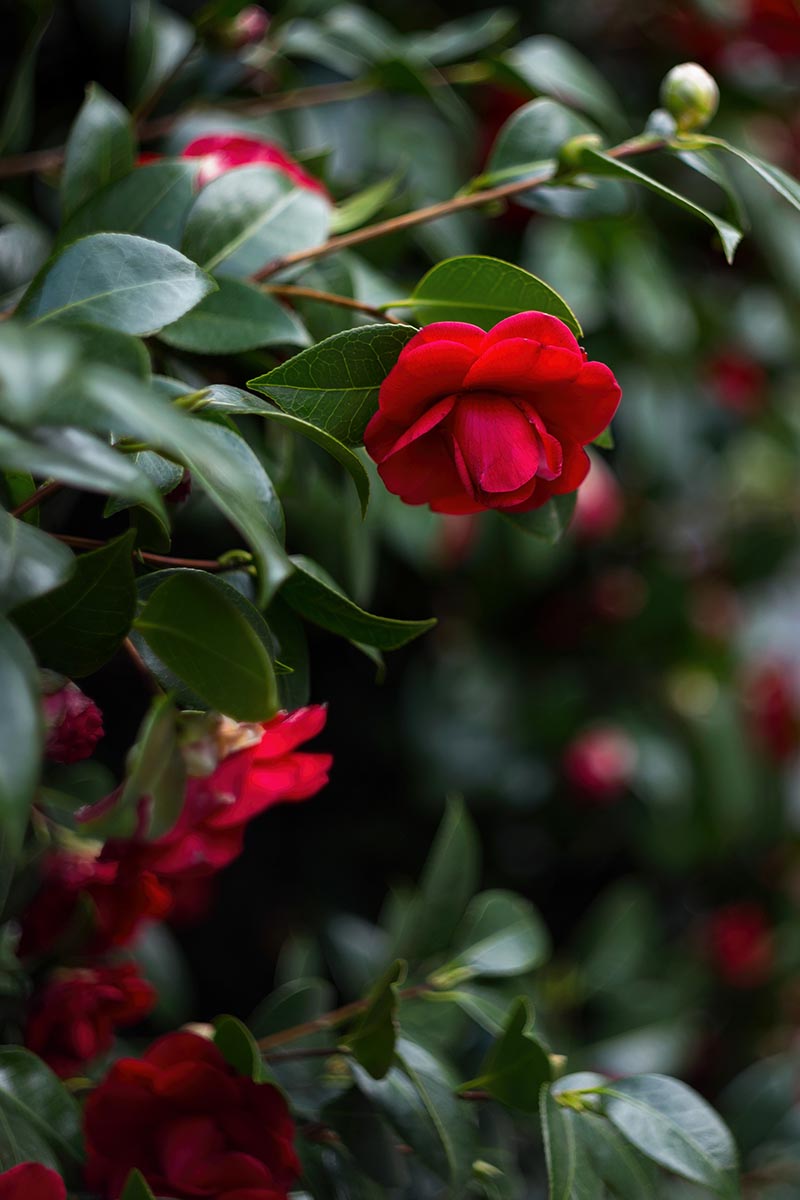
Your best bet is to ensure that your plants are healthy so they can fight off an infestation, and check them periodically so you can act quickly if you see symptoms.
Learn all about how to raise healthy camellias in our guide.
Other Mites to Watch For
Bud mites are just one of several mite species that will attack camellias.
The other notable species to watch for are Southern red (Oligonychus ilicis), broad (Polyphagotarsonemus latus), tea red (O. coffeae), and two-spotted spider mites (Tetranychus urticae).
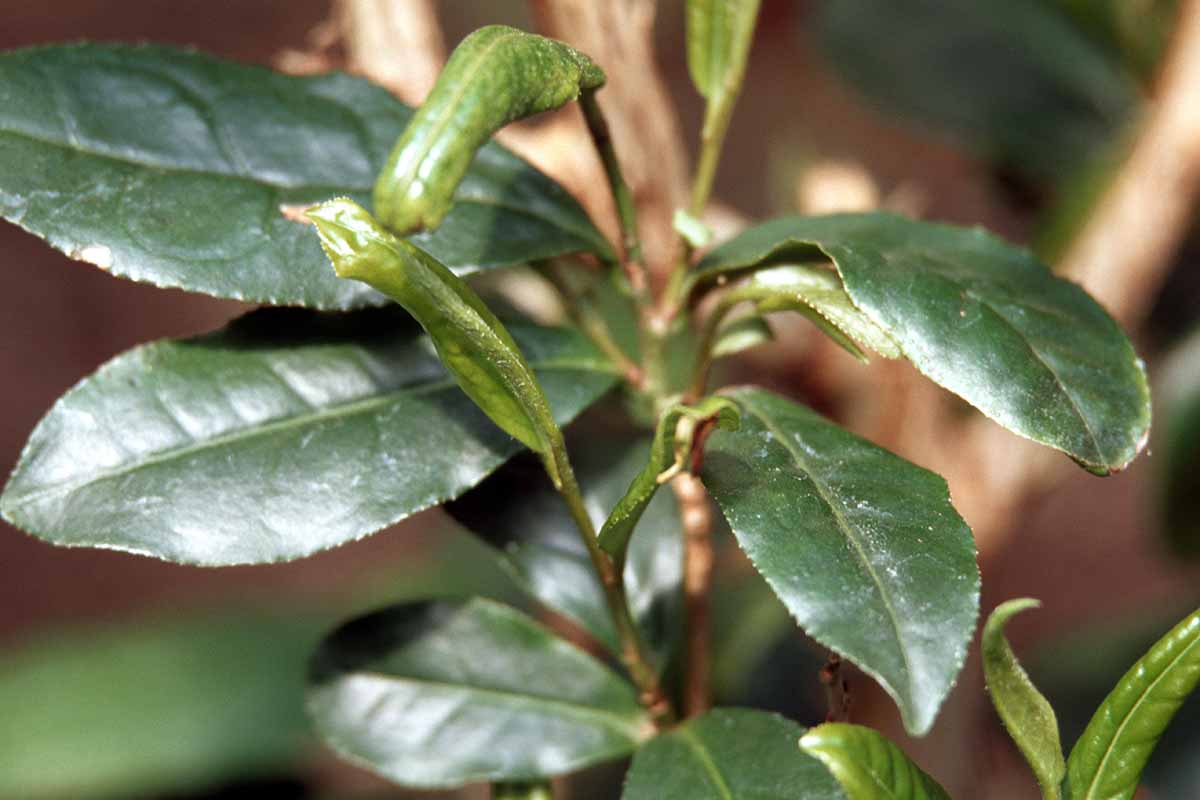
These pests are larger than C. camelliae mites, about the size of a pinhead, and they cause yellowing and bronzing on the foliage.
A large infestation on a young plant might even cause some defoliation. But in general, these pests aren’t a huge problem.
Prune off any heavily infested branches, which will usually be covered in fine webbing. Then blast the plant with a spray of strong water to knock the mites loose.
Work on improving the biodiversity of your garden to encourage their natural predators to take up residence, or introduce beneficial predators such as ladybugs and green lacewings.
Speaking of which, you can purchase green lacewing eggs in various quantities with single or repeat shipping options at Arbico Organics.
Give Bud Mites the Boot
Bud mites, while they are not the most common pests seen on camellias, can be devastating simply because they deprive us of the most fabulous part of our plants: the blossoms!

I mean, the glossy, oval-shaped leaves are gorgeous and all, but I’m not going to lie. It’s the flowers I most look forward to. And I’m not going to let some little jerks come along and ruin that for me. Are you?
If you’ve had to deal with any of these pests this year, which of the methods described above did you find most helpful? Which did you use? Share your experiences in the comments section below!
Looking for some more help growing gorgeous camellias? We’ve got you covered! Here are a few more guides that we hope you’ll find useful:
